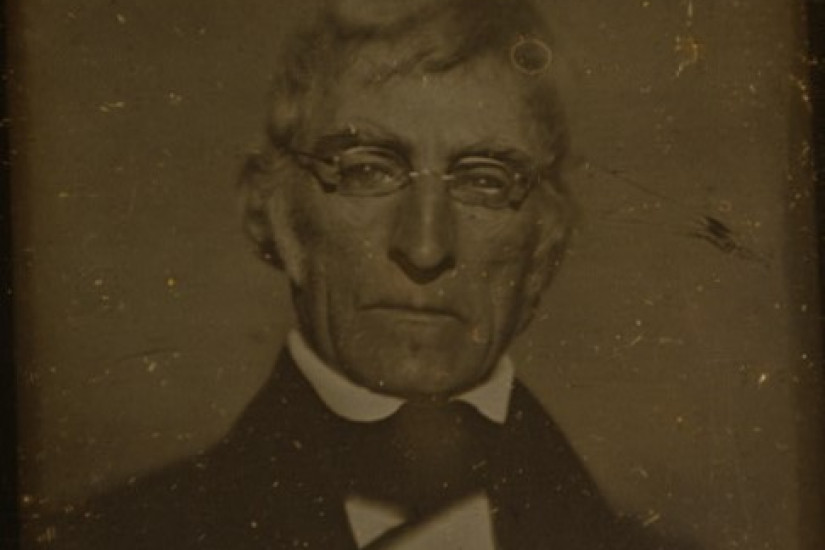The development and growth of daguerreotype portraiture in Philadelphia can be traced back to its first studio, owned and operated by Robert Cornelius. His business model was emulated by many daguerreotypists who followed him, which established Philadelphia as a central hub of photography in the United States. The first decade of the use of the daguerreotype in portrait studios will be discussed here.
The Quest for Portraiture
The birth of photography occurred in January of 1839 in France when Louis J. M. Daguerre (1787-1851) announced his daguerreotype process. Daguerre kept his formula a secret until he received a stipend from the French government, making the instructions publicly available in August of 1839. His manual was distributed internationally, making its way to the United States in late September of 1839.
The daguerreotype process was an astounding achievement but was limited initially to images of landscapes and still life subjects due to its long exposure times.
Attempts to make portraits were explored by experimenters in Philadelphia and New York. By November, metal worker and lamp maker, Robert Cornelius (1809-1893), managed to stand perfectly still in front of his camera long enough to record his own image. His daguerreotype has the distinction of being the world's first photographic self-portrait and the oldest extant photographic portrait.
"Well, we are determined now to believe anything possible by science."
Philadelphia Saturday Courier, June 6, 1840
The early daguerreotype experimenters were primarily scientists, many of whom worked for the University of Pennsylvania Medical School, such as Dr. Paul Beck Goddard (1811-1866).
Goddard discovered that bromine combined with iodine was more light-sensitive than iodine alone, as originally written in Daguerre's formula. This shortened the sitting times, rendering the daguerreotype more suitable for portraiture.
Cornelius and Goddard formed a fortuitous friendship, resulting in their joint experimentation using bromine. The two men kept this discovery a secret. In the spring of 1840, Goddard would become the silent partner in Cornelius's portrait studio.
Philadelphia's First Portrait Studio 1840
The daguerreotype portrait studio emerged as improvements increased the speed of the process, allowing for portraiture. The first studio was opened by Alexander Wolcott and John Johnson in New York City in March of 1840. They used a specially designed mirror camera to combat the long exposure times of the daguerreotype. Cornelius and Goddard opened the second daguerreotype studio in Philadelphia two months later, shortening their exposure times by using bromine as an accelerant.
